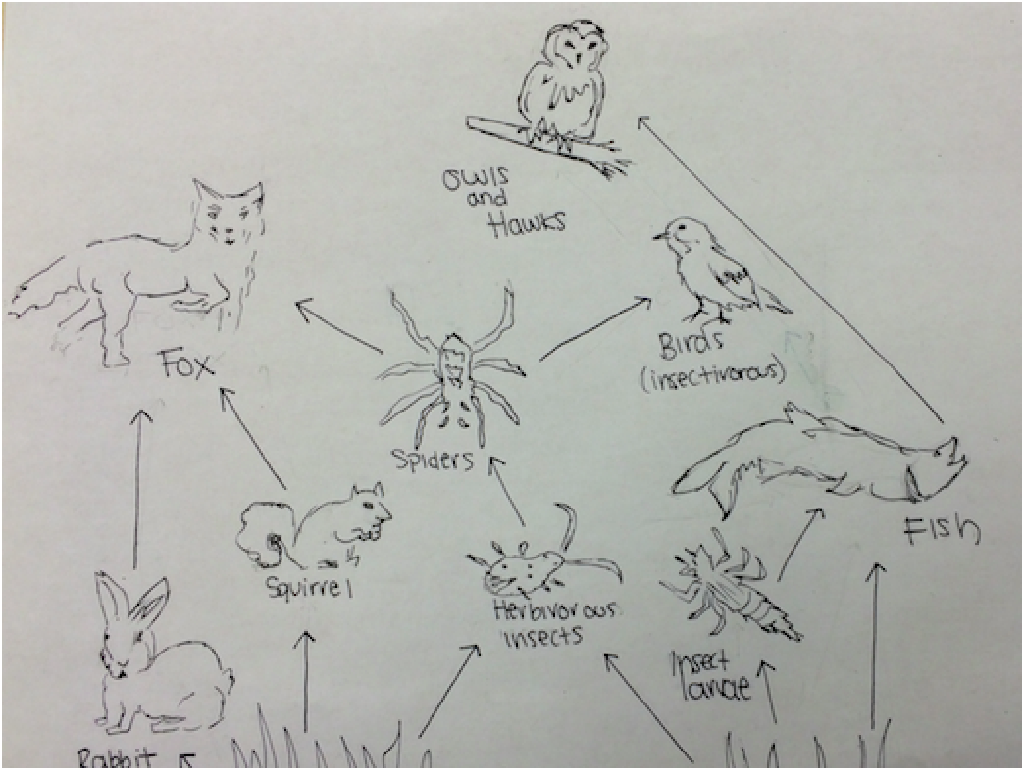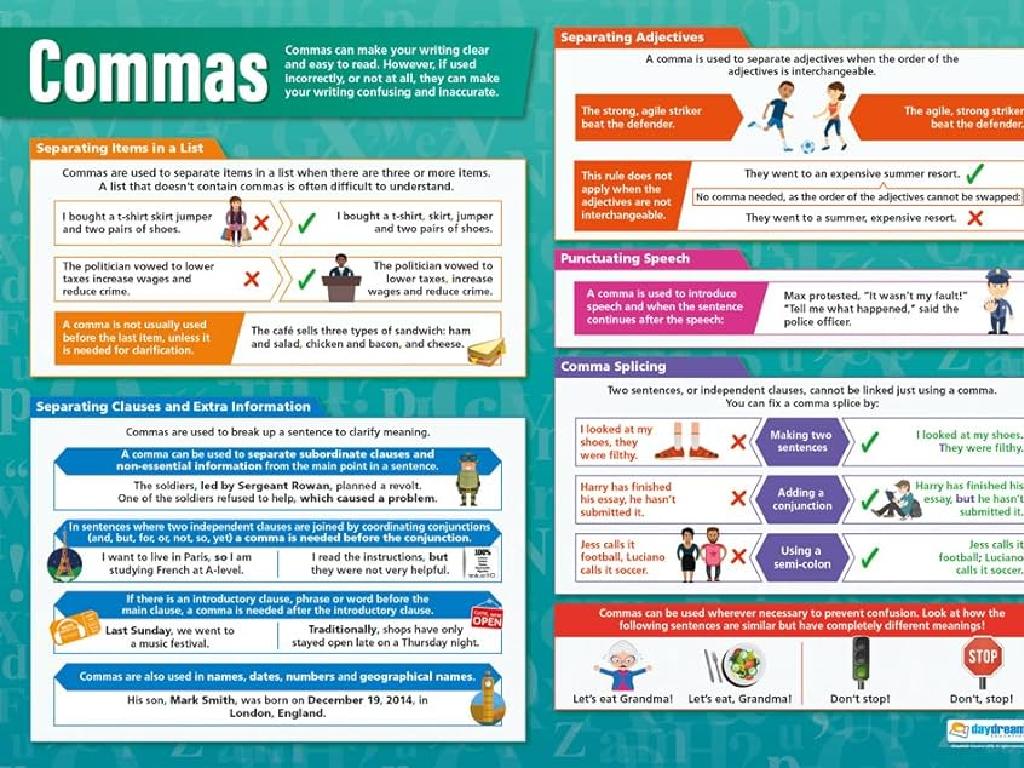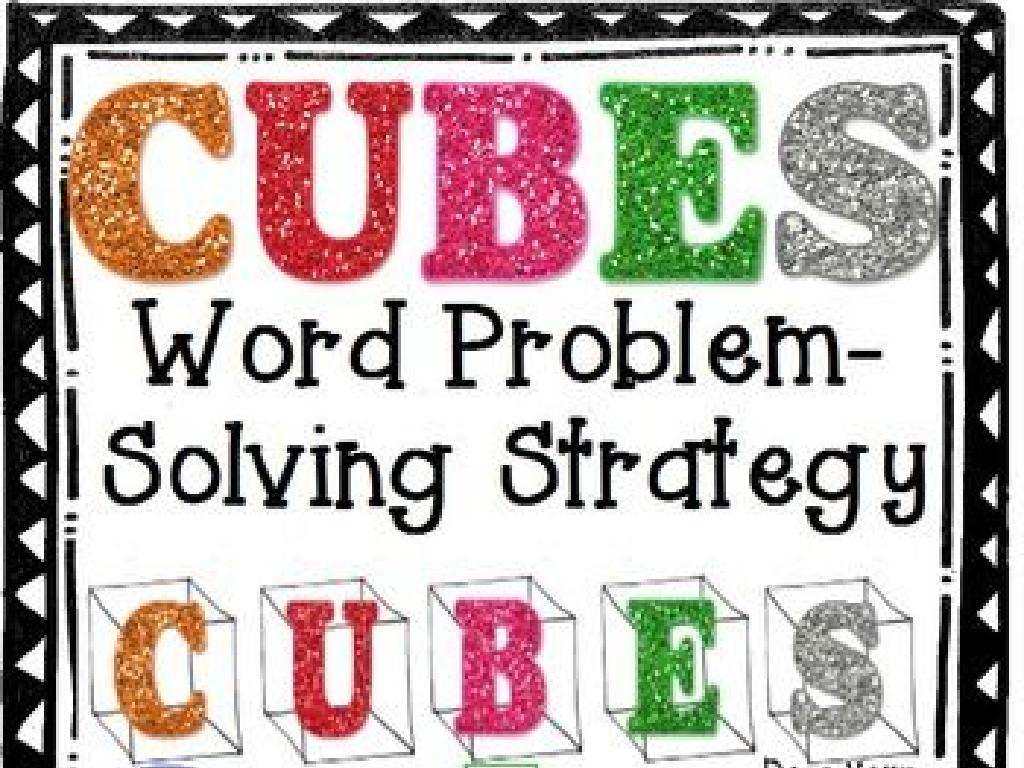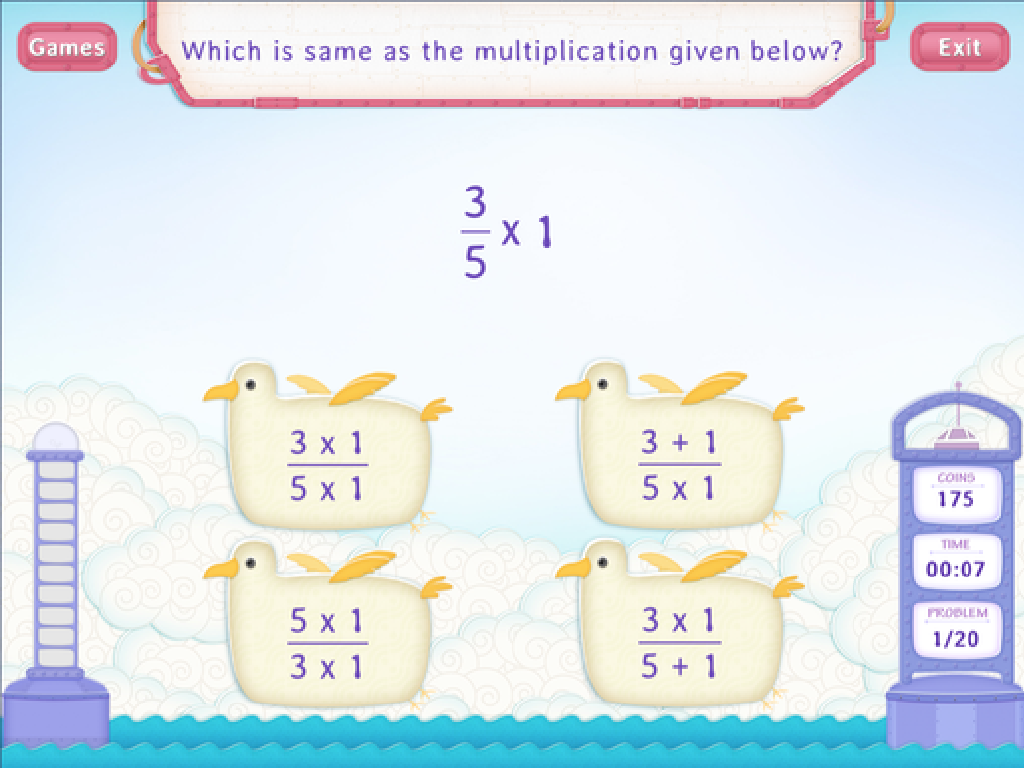Suggest Appropriate Revisions
Subject: Language arts
Grade: Sixth grade
Topic: Editing And Revising
Please LOG IN to download the presentation. Access is available to registered users only.
View More Content
The Art of Editing and Revising
– Editing vs. Revising: What’s the difference?
– Editing is correcting grammar/spelling; revising is improving the writing.
– The importance of revising your work
– Revising makes your writing clearer and more engaging.
– How to suggest revisions effectively
– Offer constructive feedback, not just corrections.
– Today’s focus: Practicing revisions
|
This slide introduces students to the concepts of editing and revising, emphasizing the distinction between the two. Editing involves fixing grammatical errors and spelling, while revising is a deeper process that looks at the overall clarity and flow of the writing. Stress the importance of revising as a means to refine thoughts and ideas, making the writing more compelling. Teach students how to provide helpful revisions by focusing on positive, constructive feedback rather than just pointing out mistakes. Today’s class will involve practicing these skills, allowing students to apply what they’ve learned by suggesting revisions for sample texts or their own writing.
The Art of Revising Your Writing
– Understanding the revision process
– Revising is refining your message and how it’s presented.
– Revising vs. simple editing
– It’s more than fixing errors; it’s enhancing the writing as a whole.
– Examples of effective revisions
– Making a sentence clearer, choosing more vivid words, changing sentence order for impact.
– Practice revising for clarity
|
Revising is a crucial step in the writing process that involves re-evaluating the content and flow of your work to make it clearer and more engaging. It’s important to distinguish between revising and editing; while editing focuses on correcting grammar and spelling, revising is about improving the overall quality of the writing. Examples of revisions include clarifying ambiguous statements, using more descriptive language, and restructuring sentences for better readability. Encourage students to practice revising by looking at their own writing and identifying areas where the message could be more effectively conveyed.
Mastering Revisions: Improving Our Writing
– Compare original vs. revised sentences
– Discuss improvements made
– Revisions can make sentences clearer, more engaging, or more accurate.
– Class activity: revise sample sentences
– Students will suggest changes to enhance clarity, style, and grammar.
– Understand the value of revising
|
This slide is aimed at teaching students the importance of revising their writing to enhance clarity, style, and accuracy. Start by showing examples of original sentences alongside their revised versions. Engage the class in a discussion about how the revisions have improved the sentences, focusing on aspects such as word choice, sentence structure, and removal of unnecessary words. Then, move on to a class activity where students work in groups to suggest changes to example sentences provided by the teacher. This interactive session should highlight the collaborative nature of editing and the value of peer feedback. The teacher should prepare several sentences that vary in complexity and issues to cater to different skill levels within the class.
Group Activity: Peer Review
– Break into small groups
– Exchange drafts with peers
– Suggest revisions on content
– Does the story flow well? Are the ideas clear?
– Focus on structure, not just grammar
– Look at how the paragraphs are organized.
|
This group activity is designed to foster collaborative learning and improve editing skills. Students will break into small groups, ideally of 3-4 members, to exchange their written drafts with each other. They will read their peer’s work and provide constructive feedback, focusing on the content and structure of the writing. It’s important to emphasize that while grammar is important, the main goal is to enhance the clarity, flow, and organization of ideas. Teachers should monitor the groups to ensure that feedback is respectful and productive. Possible activities for different students could include focusing on the introduction, conclusion, supporting arguments, or transitions between paragraphs. This exercise will help students view their writing from a different perspective and learn to critique constructively.
Sharing Our Revisions
– Groups present their revisions
– Discuss revision improvements
– Why do these edits make the piece stronger?
– Class feedback on changes
– Constructive comments to help peers
– Reflect on the revision process
– Understanding the value of revising work
|
This slide is designed for a collaborative class activity where students will engage in peer reviewing by sharing the revisions they have suggested for a piece of writing. Each group will take turns presenting their suggested changes and explaining why they believe these revisions will enhance the writing. The class will then provide feedback on the revisions, fostering a constructive dialogue about the editing process. The teacher should guide the discussion to ensure it remains positive and productive, emphasizing the importance of clear, concise, and coherent writing. The activity aims to develop students’ critical thinking and editing skills, as well as to reinforce the concept that writing is a process that includes drafting, revising, and polishing.
Class Activity: Let’s Revise Together!
– Review a draft as a class
– Suggest revisions collectively
– Engage in a guided revision activity
– I’ll help you think critically about improving the draft.
– Apply our editing skills
– Use strategies we’ve learned to enhance the writing.
|
This interactive class activity is designed to consolidate the students’ understanding of the revision process. Display a written draft on the screen and guide the class through a collaborative revision session. Encourage students to identify areas for improvement, such as sentence structure, word choice, and clarity. Facilitate discussions on why certain changes might enhance the draft. This activity will help students apply editing strategies in a practical context and understand the value of revising their work for clarity and coherence. Prepare to offer examples of revisions and explain the reasoning behind them. The goal is to make the revision process a hands-on learning experience.
Homework: Revise for Clarity and Interest
– Revise a paragraph from a book/article
– Enhance clarity and structure
– Look for confusing sentences to rewrite
– Make the paragraph more engaging
– Add descriptive words, vary sentence length
– Share your revisions in class
|
This homework assignment encourages students to practice their editing and revising skills by selecting a paragraph from a book or article. They should focus on improving the clarity of the writing by restructuring sentences for better flow and understanding. Additionally, students should aim to make the paragraph more interesting by using descriptive language and varying sentence structure. This exercise will help them understand the importance of revision in the writing process. In the next class, students will have the opportunity to share their work, providing a platform for peer learning and constructive feedback.
Conclusion: The Power of Revision
– Revising improves writing quality
– Rewriting is key to good writing
Even famous authors rewrite their work many times!
– Open floor for any questions
– Practice makes perfect
Keep revising your drafts to enhance your writing skills.
|
As we conclude today’s lesson on editing and revising, emphasize the importance of suggesting appropriate revisions to improve the overall quality of writing. Remind students that even the most skilled writers go through multiple drafts before they are satisfied with their work. Encourage them to view rewriting as an essential part of the writing process, not a sign of poor writing. Open the floor for any questions the students might have, providing clarification and further examples if needed. Finally, encourage them to continue practicing their revising skills with various writing assignments to become more proficient writers.






